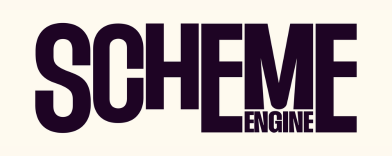
Bringing 70 Years of Alpine to Life with a Handcrafted Vision

For the 70th anniversary of French racing icon Alpine, the brief from BETC Étoile Rouge was to create an epic, visually daring film that could leap across decades of the brand’s history – all without losing sight of its soul. With live-action, VFX, and traditional 2D animation on the table, director Antoine Bardou-Jacquet enlisted creative studio Mathematic from the outset to help fuse these techniques into an era-hopping ride.
The challenge was ambitious in scope, with each chapter of Alpine’s legacy needing to feel authentic, both historically and emotionally, while the transitions between time periods demanded a strong creative throughline. For Mathematic’s VFX supervisors Jehan Bouazza and Yann Aldabe, that meant stepping in early and getting granular, studying archival references and the visual languages of comic books from multiple eras to guide the film’s particular style.
“The brief was to create an immersive and dynamic visual experience—one that artistically and respectfully journeys through the eras of Alpine,” says Jehan. But the ambition didn’t stop at style; the team was committed to the brand’s philosophy, “lightweight is power”, which subtly influenced everything from the movement of the animation to the elegant restraint of its comic-inspired linework.
Beginning with the references, the team explored the clean graphic tones of 1950s Tintin, more expressive modern comics, and everything in between. The idea was never to mimic a single style, but to evolve the aesthetic across decades, letting the visuals shift alongside the cars, races, and cultural moments depicted onscreen. This approach allowed them to keep the film rooted in narrative – with 2D animation used not just as decoration, but as a storytelling device.
“When the 3D sequences were completed, our 2D team stepped in to redraw each frame by hand,” explains the team. “We added stylised 2D effects on top of the footage to preserve that artisanal, human touch – so characteristic of traditional comic art.”
That artisanal quality didn’t come easy; the team had just six weeks to finalise all the visual effects. Jehan, who was present on set, helped gather the references and data needed to ensure continuity between the live-action footage and the animated layers that would later be integrated. Tight deadlines aside, the biggest creative challenge was maintaining that emotional resonance while weaving between mediums.
“There’s a deceptively simple aesthetic to comics,” say Yann and Jehan. “They’re iconic and emotionally direct. So while the work was highly technical, the goal was always clarity and feeling.”
One sequence in particular – the Monte Carlo chapter – stands out for them. “It carries a truly unique, almost timeless atmosphere,” says Yann. “There’s something deeply poetic about it – a blend of nostalgia and energy. The illustrators’ work redrawing every detail of the environment and car really makes it sing.”
Jehan highlights the 2D animation overall as a personal point of pride. “That process, where every frame was redrawn and enhanced, gave the film its emotional weight. It grounded the entire production in something handcrafted – something rarely seen at this scale.”
But while the emotional and stylistic layers played a huge role, historical accuracy wasn’t left behind. Every Alpine car featured in the film was recreated with painstaking detail – from bodywork to decals to race environments. Mathematic approached it with a documentary-level mindset. Yet the aim, they say, was always to capture more than just visual truth.
“We had to honour the emotion of driving, the intensity of competition, and the passion behind racing,” the pair explain. “It wasn’t just about how the cars looked – it was about what they meant.”
Collaboration across teams was essential to keeping that vision intact. Mathematic credits director Antoine Bardou-Jacquet for his clarity around how to merge live-action and animation meaningfully and BETC Étoile Rouge for maintaining the brand’s integrity while championing bold creative decisions.
“Antoine had a clear vision for how to transition between live-action and animation, and he skillfully integrated the technical dimension into the storytelling, especially regarding the visual effects. This allowed for a seamless interaction between filmed footage and animated elements.”
Now that the project has been wrapped up and the work is live, the team can reflect clearly. The success of the film was in both the creative execution and the mutual trust built between artists, production partners, and the client. “It could have easily become dominated by modern digital technology,” they say. “But
The success of the film hinged not only on the creative execution but also on the mutual trust between artists, production partners, and the client. “It could have easily become dominated by digital technology,” Jehan says. “But the traditional 2D animation brought a human, handcrafted soul to the work. That’s what made it resonate.”
For a film celebrating 70 years of racing heritage, it’s fitting that the final result feels like a journey. And for Mathematic, it’s a reminder that even in an age of cutting-edge tools, there’s still power in the pencil stroke.















